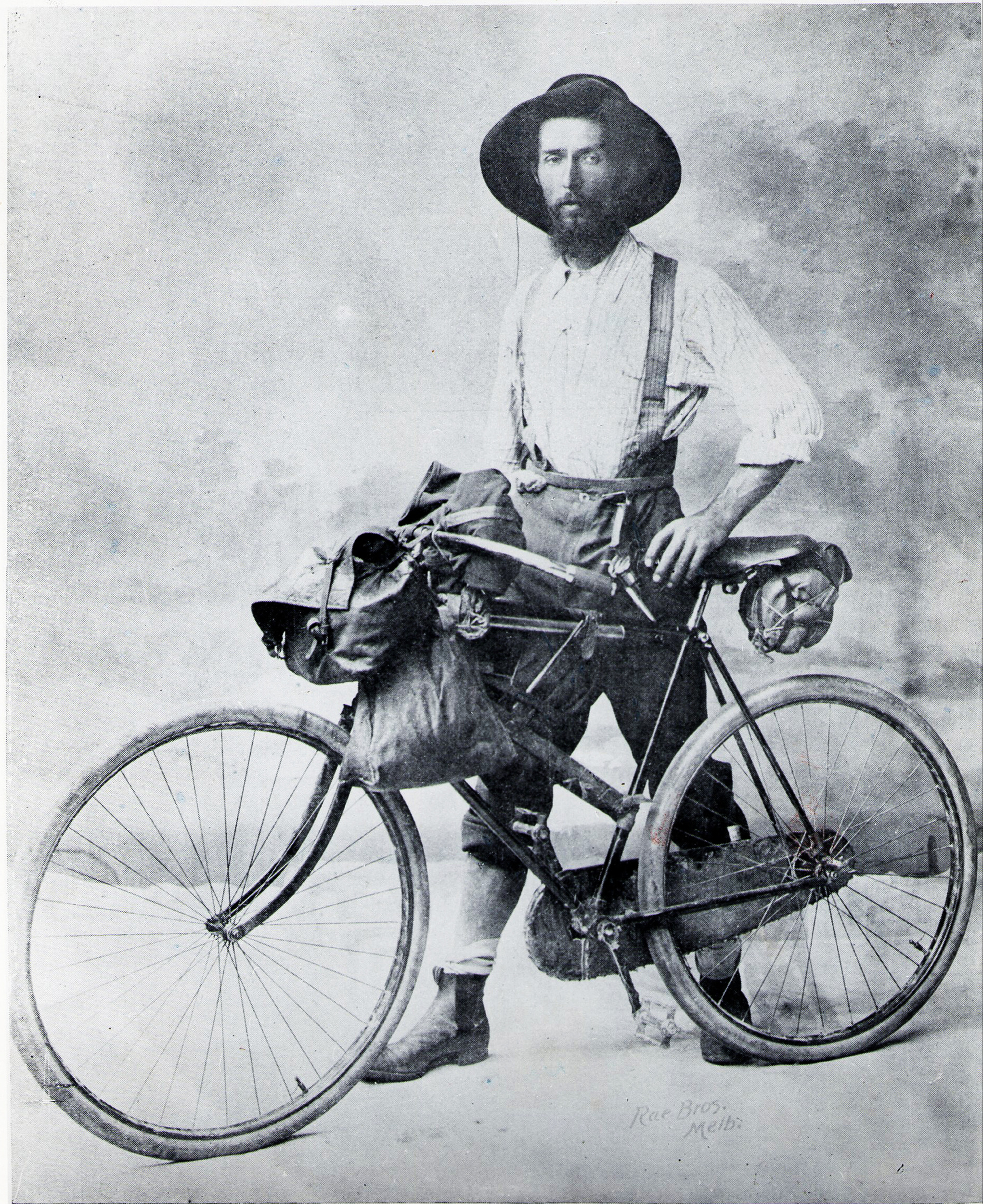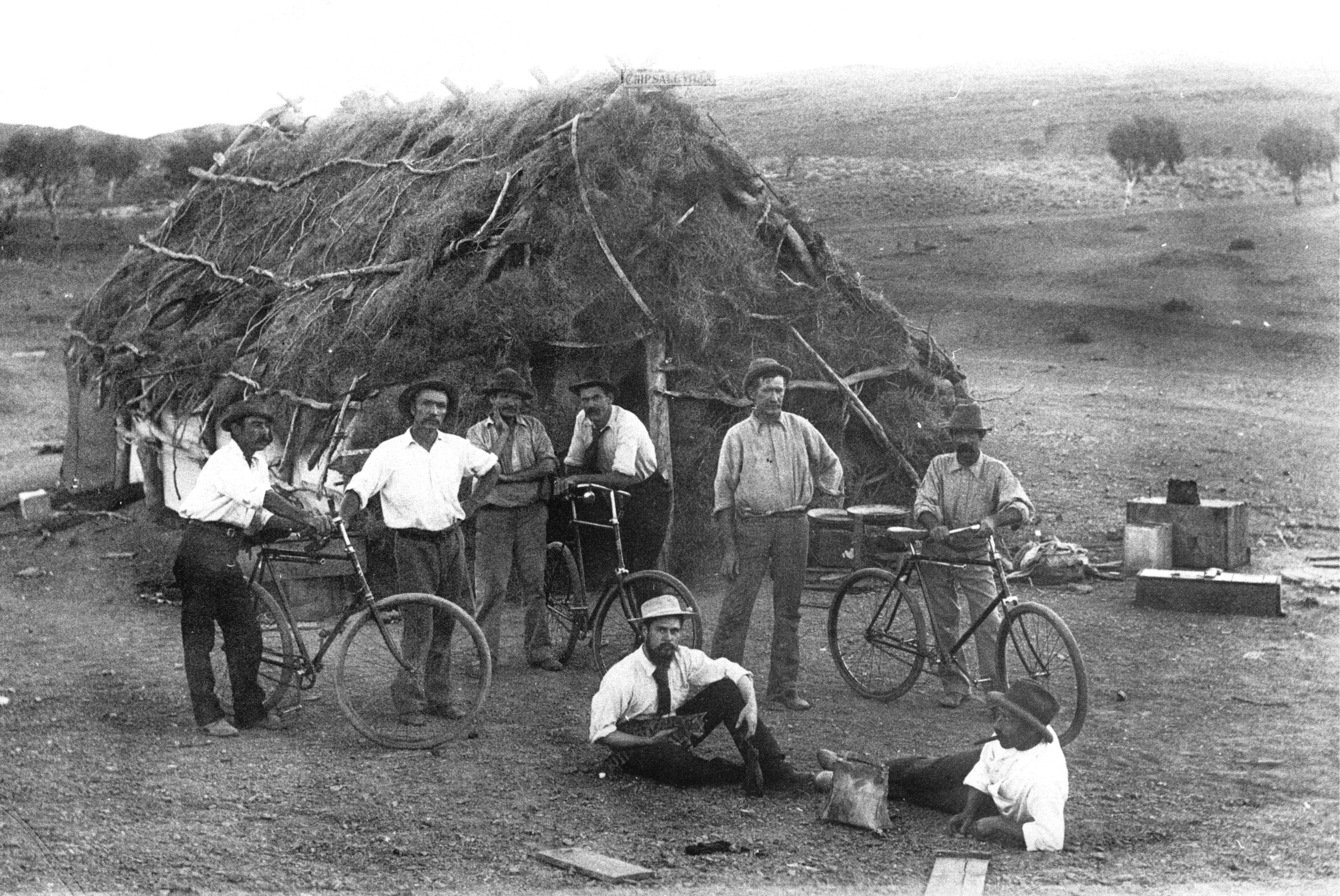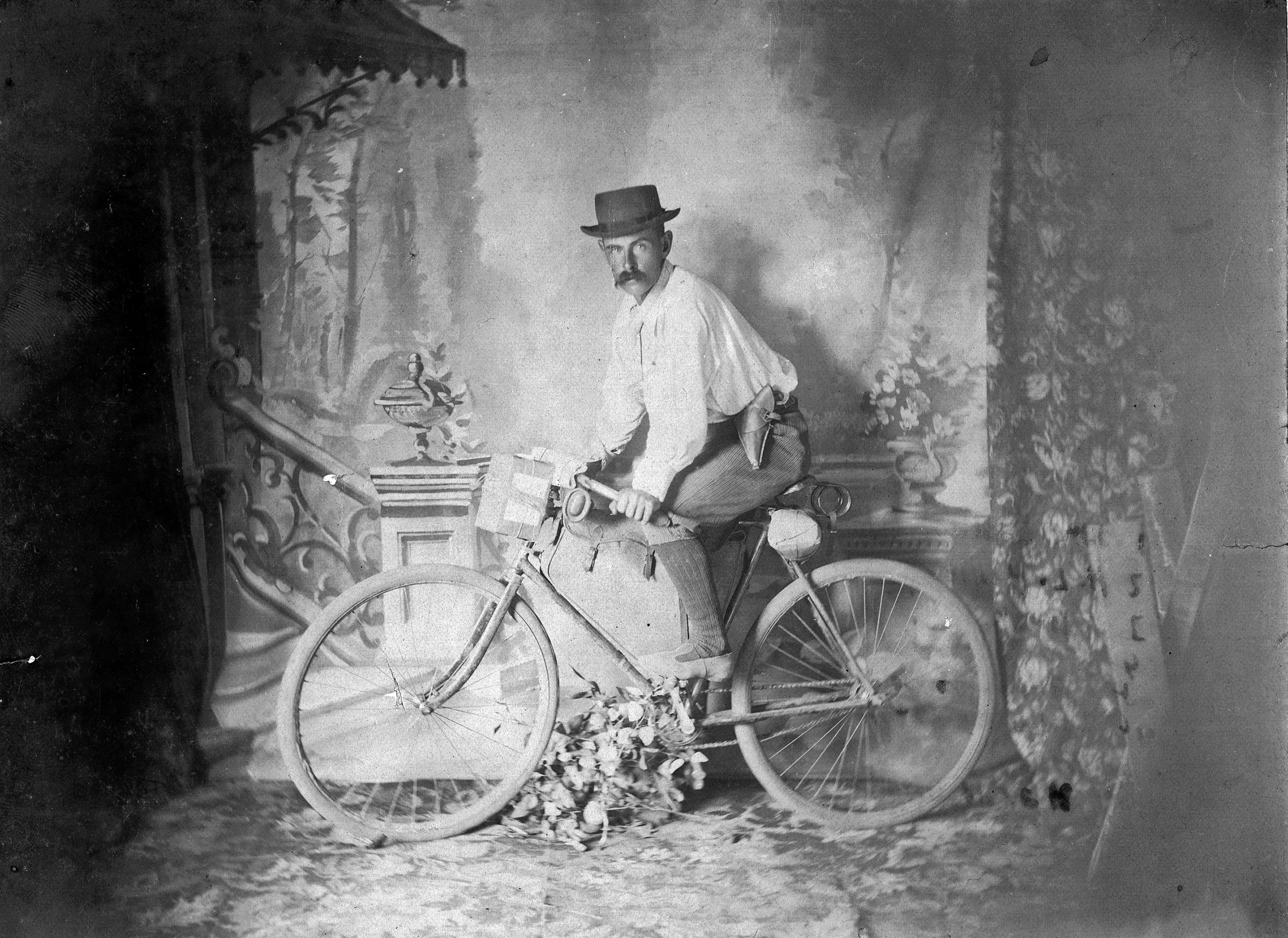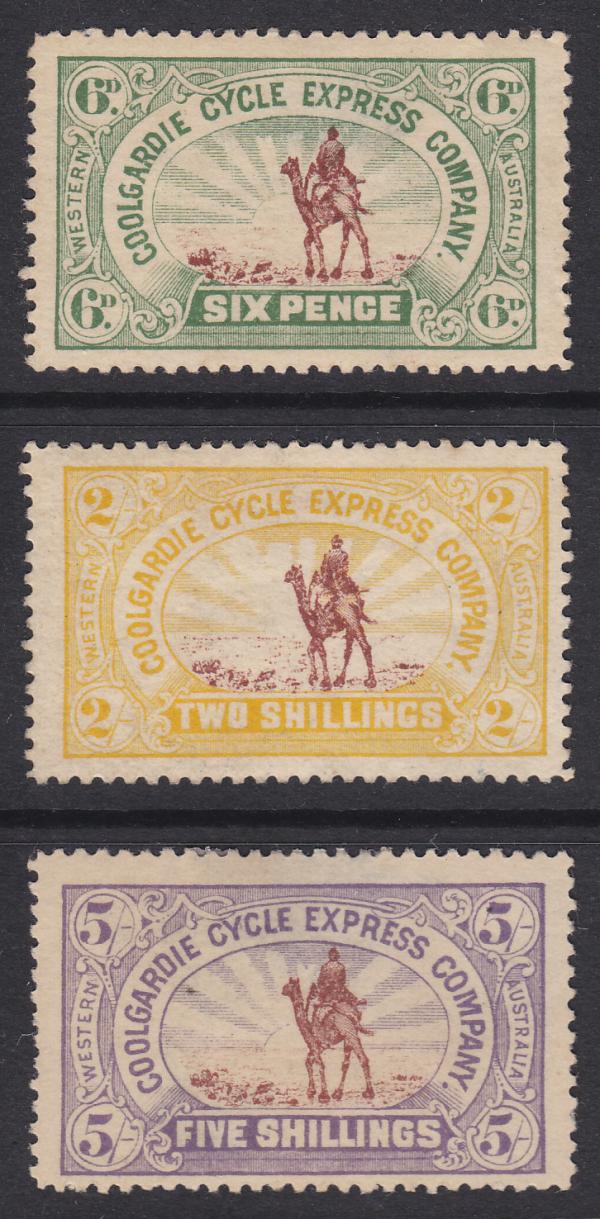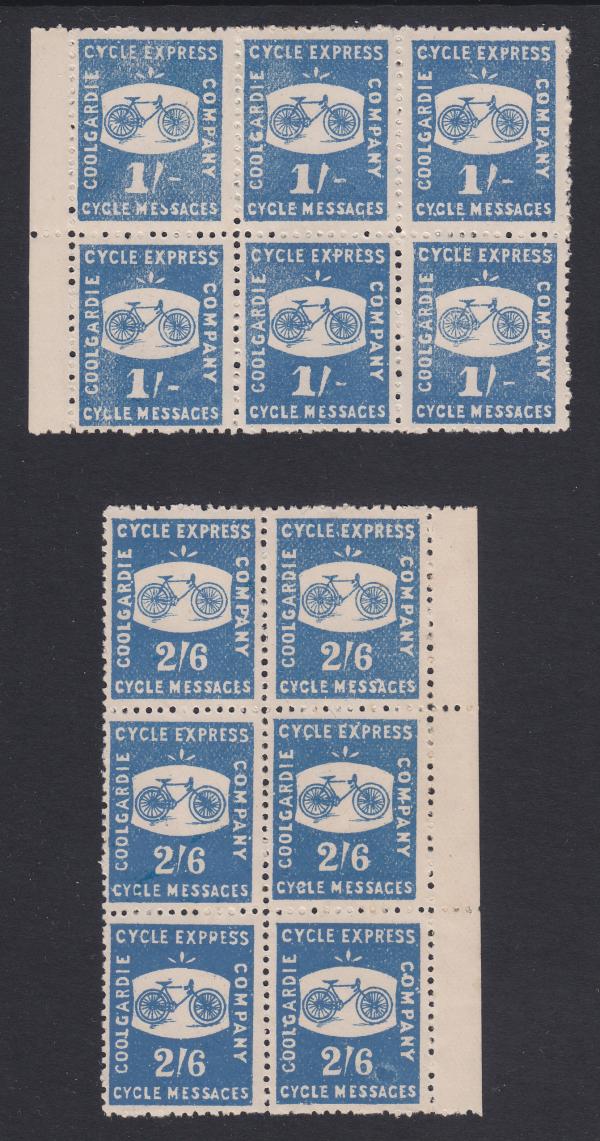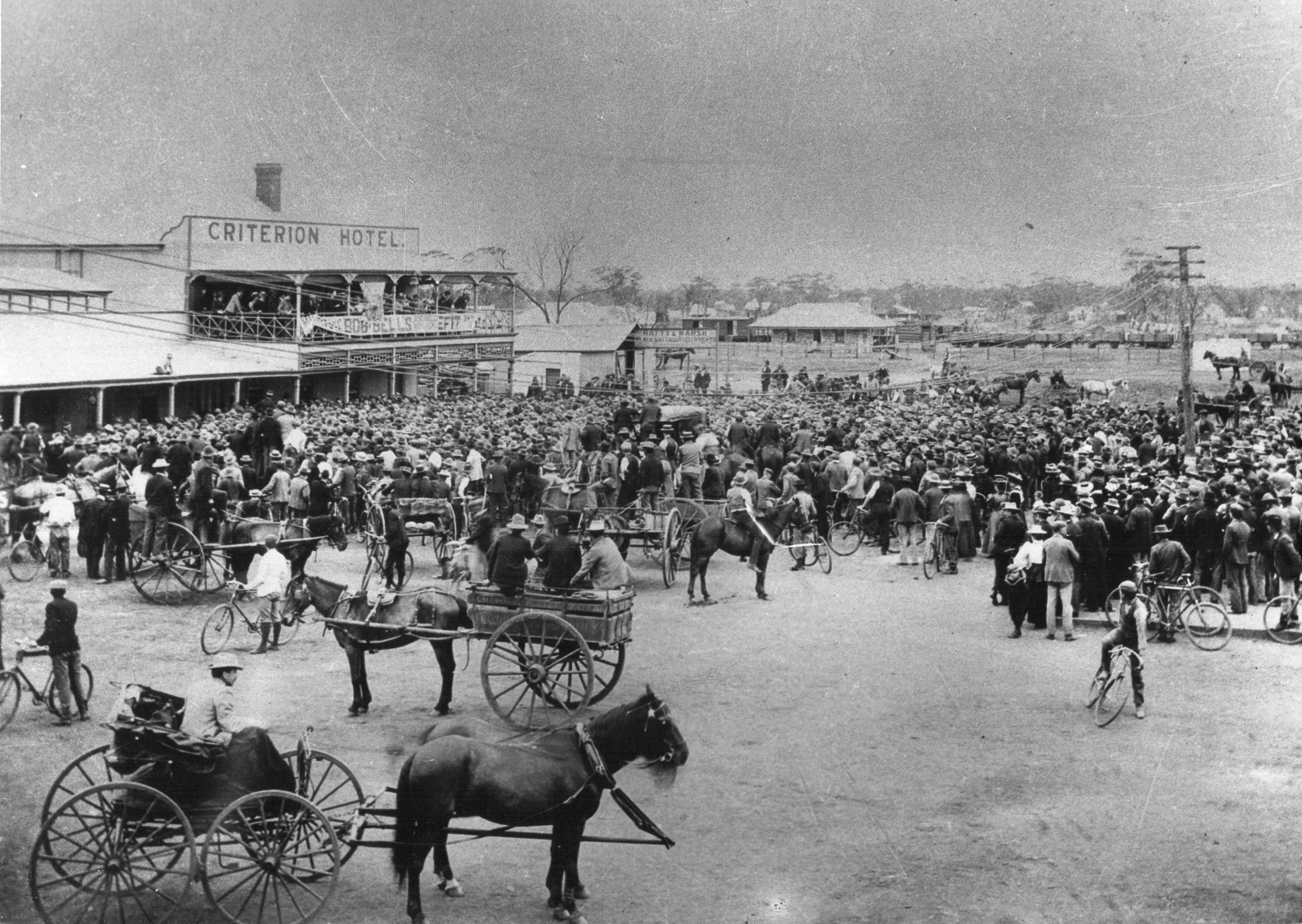The Goldfields
Gold finds around Coolgardie and Kalgoorlie in the early 1890’s were followed by a massive population increase. Local demand for postal and telegraph services was not met by the state government for years. Bicycles were the transport of choice proving to be more reliable and faster than horses and camels in situations where large loads did not need to be carried.
Bikes have the added advantage of not needing to be fed or watered, particularly important in the arid interior. A cyclist uses less water per km than a traveller on foot, much less than horses or camels.
Bicycles remained in common use in the outback for decades after motor vehicles arrived. Up to the 30’s distances of 200km in a day were not uncommon for fit travellers and workers, including prospectors, rabbit proof fence and pipeline inspectors, cycle ambulance services and kangaroo shooters. Shearers and and the clergy both tended far flung flocks on two wheels.
How many bicycles?
From 1895 to 1900 around 100,000 bicycles were sold inVictoria, which was thought to be the most in Australia. However this, in part was due to the large population, 1,200,000 in Victoria, compared to 190,000 in WA (source - ABS). The per capita ownership of bicycles was highest in Western Australia, and Coolgardie in the Goldfields is estimated to have trumped every other place in Australia for bicycle ownership. In the 1890s roadster bicycles, the most common used in the bush, retailed for £25 to £35, (roughly $3000 today) but by 1900 it was possible to buy new bicycles under £5 (roughly $500 today)
How much did bikes weigh?
One (of many!) amazing facts about bikes at this time is that common weights were under 11.8 Kg with a range of 10.2 to 12.2 Kg. This compares well with the weight of modern steel “fixies” All early bikes (pre 1900s) were fixies – and brakes were not widely used. Freewheels were adopted after about 1900, but rod and calliper brakes did not become common until around the 1920s.
Reliability and distances travelled
Even more remarkable is the craftsmanship used on many old bikes. They were used as daily transport in the bush in dirt and on corrugations, and they had to be reliable. It has been estimated (by Jim Fitzpatrick) that some bikes did more than 160,000 kms and were used daily on average for over 20 years.
Bikes proved to be more reliable and faster than horses and camels in situations where large loads did not need to be carried. As well as speed – for any distance over 3km a cyclist is faster than a horse and the greater the distance the bigger the margin. Bicycles were extensively used throughout Australia right up to the 1930s, but nowhere more routinely than the Western Australian Goldfields, an area of more than 770,000 square Kms.


